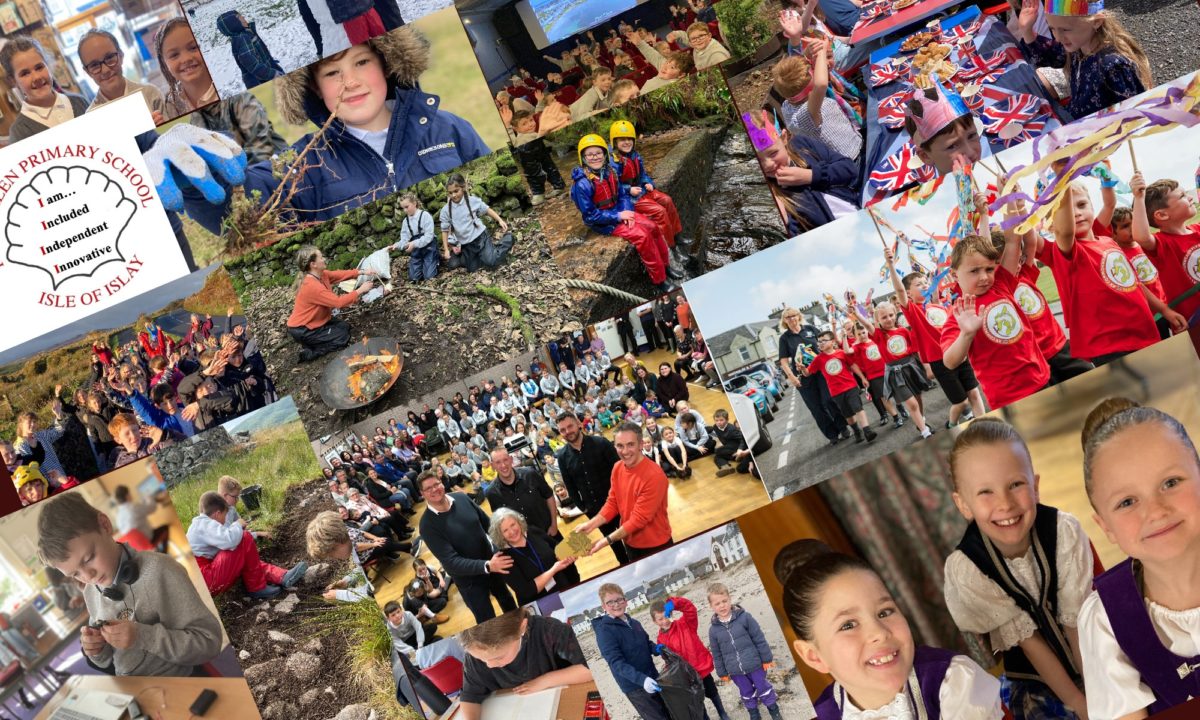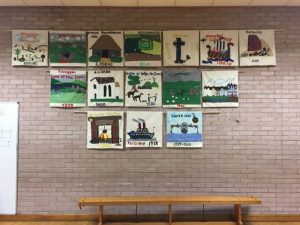Renewables Engineering Islay
Our project for the Rolls-Royce Science Prize aims to build children’s understanding and experience of engineering within the context of renewable energy. Living on a small island means that children have a limited experience of different jobs and we want to promote engineering. We feel that developing Engineering Habits of Mind as a way of tackling problems will not only apply to engineering tasks but many other learning experiences that children encounter. The renewables context for the project comes from our amazing natural environment. Islay is surrounded by sea and subject to regular strong winds. It is home to the Limpet Wave Station – a prototype wave turbine and there are plans to use the strong tidal currents to power an array of underwater turbines in the future. We also have our first community wind turbine.
What is an Engineer?
In this first phase of the project we have tried to establish some baselines so that we can measure the impact of our project at the end of the year. In all classes, children were asked ‘What is an engineer?’ The results of this were fascinating; nearly all of the children in P1/2/3 thought that engineers ‘fixed cars’ while children in P6/7 almost all children saw engineers as wearing hard hats, steel capped boots and having tool belts. Many children also saw engineers as being ‘only boys.’ P6/7 have started to research different fields in engineering such as chemical and biomedical engineering.
Assessing our Engineering Skills.
Since developing Engineering Habits of Mind underpins our project we have used a Do you think like and Engineer? self-assessment tool with children to see how they felt about their skills at the outset. The resource we used was developed by the Royal Academy of Engineering for schools participating in the ‘Thinking like an Engineer’ project during 2014-2016. Staff also decided that we should try and assess the children’s engineering skills in a practical task at the beginning and end of the project – we decided on a bridge to span a 30cm gap and support a plastic cup into which weights would be dropped. This was also the first session where we used the video camera, which made us all nervous! It was interesting to compare notes at the end of the day – almost all children had just gone for a wad of straws taped together with Sellotape. However, one boy in P1/2/3 had visited a bridge and remembered details of how the structure was supported. He then built his bridge single-handedly and put on some railings to stop the cup falling off – this was really unexpected.
In all the classes, staff are talking to the children about engineering and how engineers work and all opportunities are being taken to encourage thinking like engineers. Jo Clark has encouraged P6/7 to create design boards for the Young Imagineers competition run by Statoil. They had to come up with an engineering idea that could solve a problem for the future, and lots of great ideas were generated. 3 were chosen by the class to enter for the competition; Sarah’s Scaredy Sheep device stops sheep getting stuck on their backs by barking like a dog, Rebecca has designed a device that uses static electricity from clothes to repell rain from your glasses and Lauren has invented a device that knows when the inside of your car gets too hot and sends an alarm to your key.
In the Early Learning and Childcare Centre Alison Logan and Katie Bonar have been making the most of their new equipment. The children have been working together to build bridges and ramps, problem solving to make sure that the structures were sufficiently wide and long for everyone to fit across. They have also been problem solving to bail out the boat in the outdoor area. Using lengths of bamboo, they have engineered a solution where bailed water can flow down and be collected at the other end.

Thinking about Energy
The first phase of our project has been Thinking about Energy, how important it is to our lives and how we use it. In P6/7 with Jo Clark, children have been working on a farming topic in which they calculated their own carbon footprint and looked at the carbon footprint involved in food production and transport. They cooked their own low carbon footprint foods for a buffet for pensioners in the local community for Harvest. They have started work on the School’s Carbon footprint and will complete this next term.
Kate Brown’s P4/5 class have been looking at the energy they use in school and at home. The devised questionnaires to find out how many different electrical items children had at home and made tables and graphs to show their results. The class then looked at the energy use of different appliances and were amazed how much energy was used by their showers. Next term they are going to engage with the community to encourage energy saving and will hopefully be getting hold of some energy meters to look more closely at what we use in school.
P1/2/3 with Maggie Harrison have been finding out what makes their toys work. As well as looking at forces they have been finding out about toys that produce movement, sound, light and heat and thinking about how energy is needed to make them go. Linked to their transport topic, they have also thought about what powers different vehicles and designed their own cars and boats. They have started to Think like Engineers, working in teams on engineering challenges.

We have enlisted the help of George Read from the Islay Energy Trust. Our team also includes Maureen MacDonald, Head Teacher. Maureen began her career at Port Ellen as a class teacher, was promoted to Head Teacher in 2008 and in 2016 became shared HT of Port Ellen and Bowmore Primary Schools. Having worked with Education Scotland as an Associate Assessor, Maureen has been a member of various teams engaging in evaluative and professional dialogue. This experience has been invaluable and has influenced practice within the school. Community involvement and parental engagement feature highly in the work that Maureen does. She has conducted the school Gaelic Choir for many years, achieving national success and helping to raise the profile of Port Ellen Primary School. During the October holiday the choir have been competing, and winning, at the National Mod!
Moving forward into the next phase of our project. we are looking forward to our first visit from our mentor, Neil Chattle, just after the October break.



































 As part of our Transport topic, P1/2/3 wanted to find out all about cars, how they worked and what made cars go faster. So they wrote to Dugald McKerral and went on a trip to the garage. They saw a car up on the hydraulic ramp and could see the wheel axels and the chassis that they had learned about in class. Lots of interesting questions were asked and we are going back to class to find out more about pistons. This learning ties in really well with the Rolls-Royce Science Prize.
As part of our Transport topic, P1/2/3 wanted to find out all about cars, how they worked and what made cars go faster. So they wrote to Dugald McKerral and went on a trip to the garage. They saw a car up on the hydraulic ramp and could see the wheel axels and the chassis that they had learned about in class. Lots of interesting questions were asked and we are going back to class to find out more about pistons. This learning ties in really well with the Rolls-Royce Science Prize.




 P4/5 have been investigating
P4/5 have been investigating  how craters are made. They thought about the different variables that might change the size of the craters – things like the size of the meteorite, the weight, the shape and even the angle that it hits the surface. Here they are testing out their predictions.
how craters are made. They thought about the different variables that might change the size of the craters – things like the size of the meteorite, the weight, the shape and even the angle that it hits the surface. Here they are testing out their predictions.

